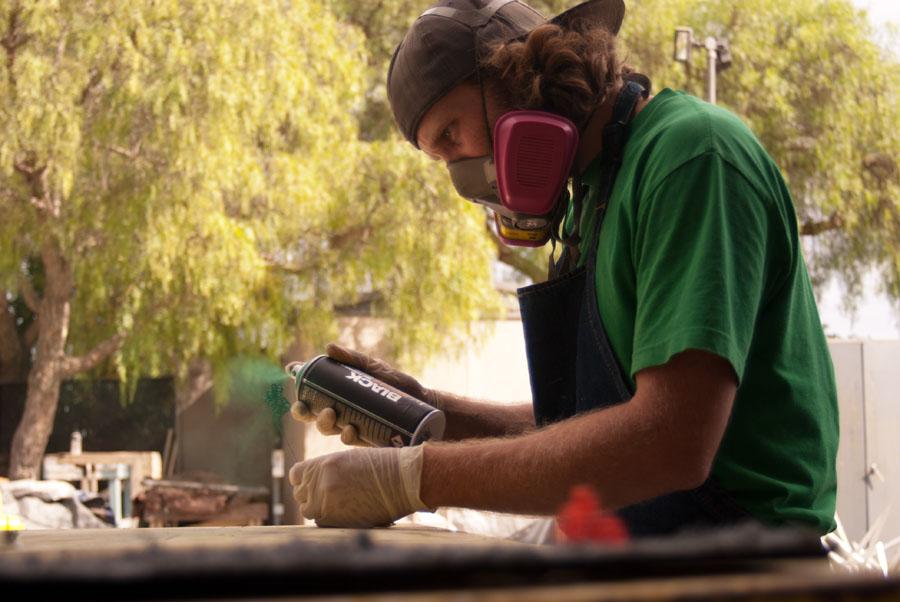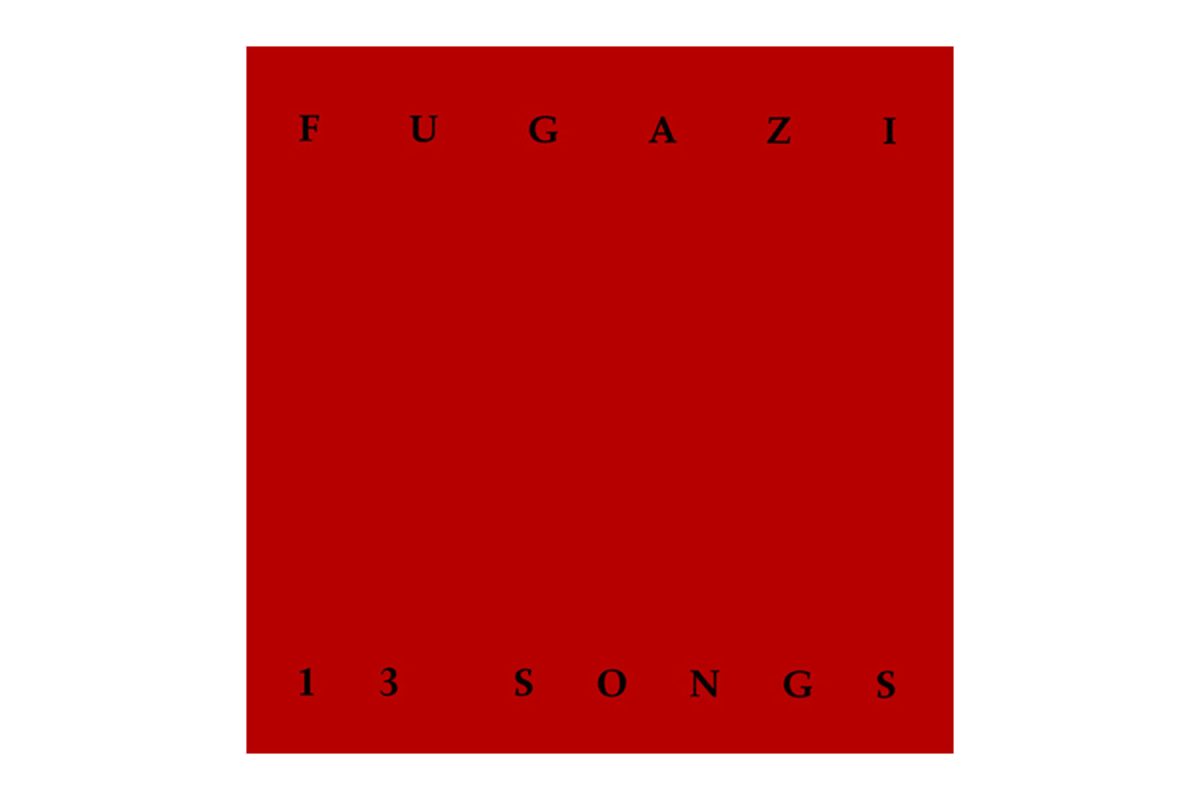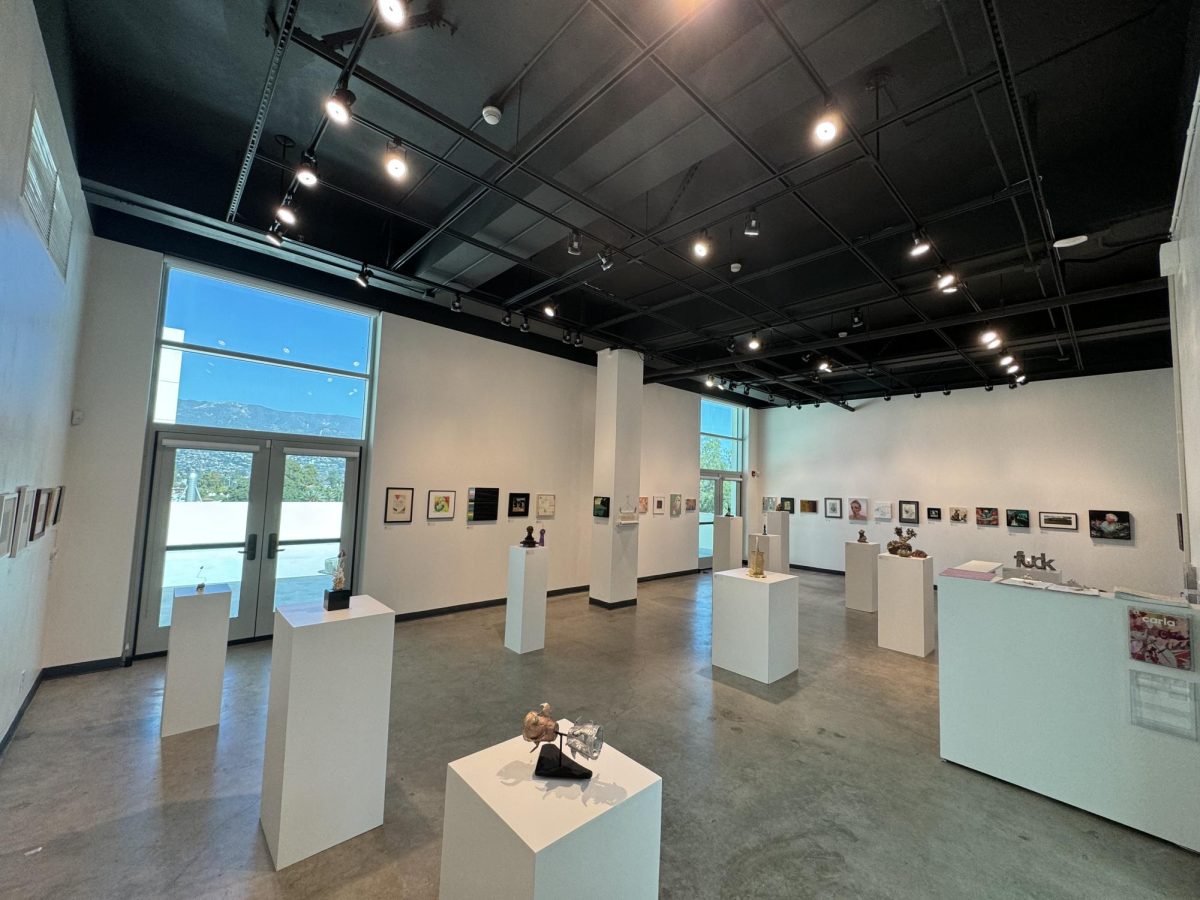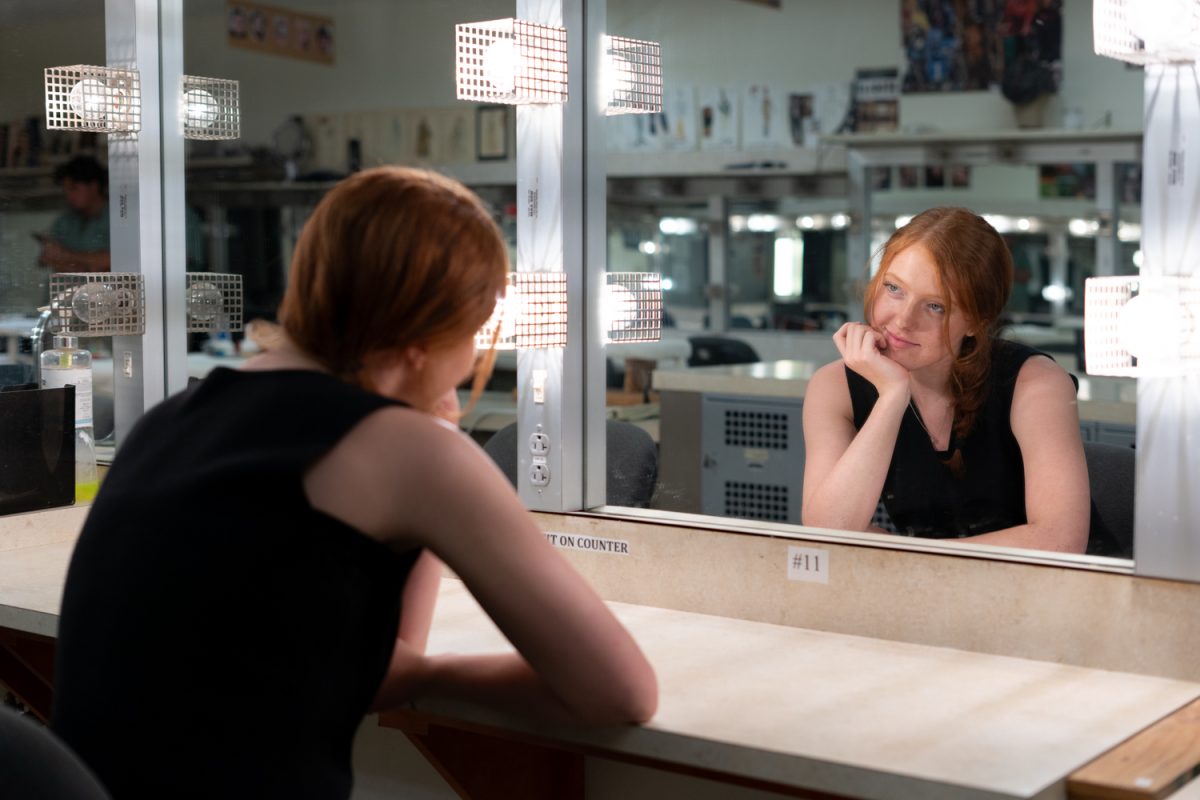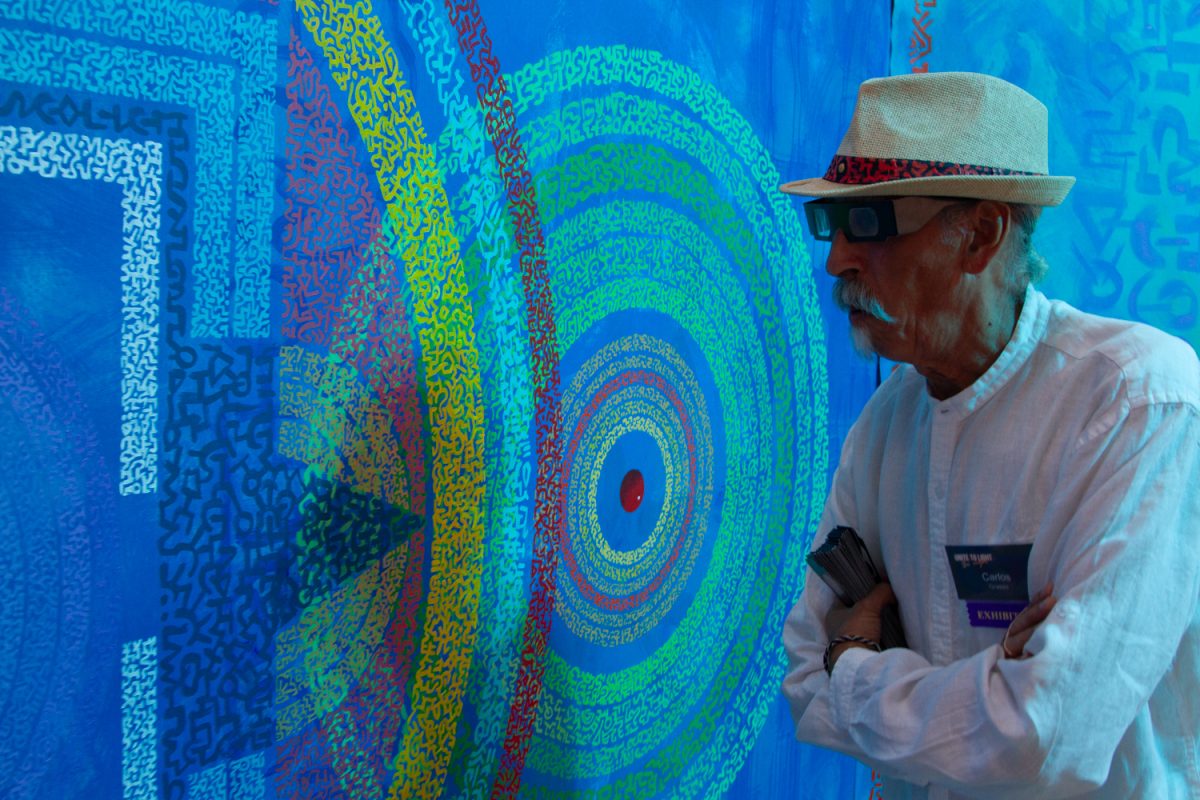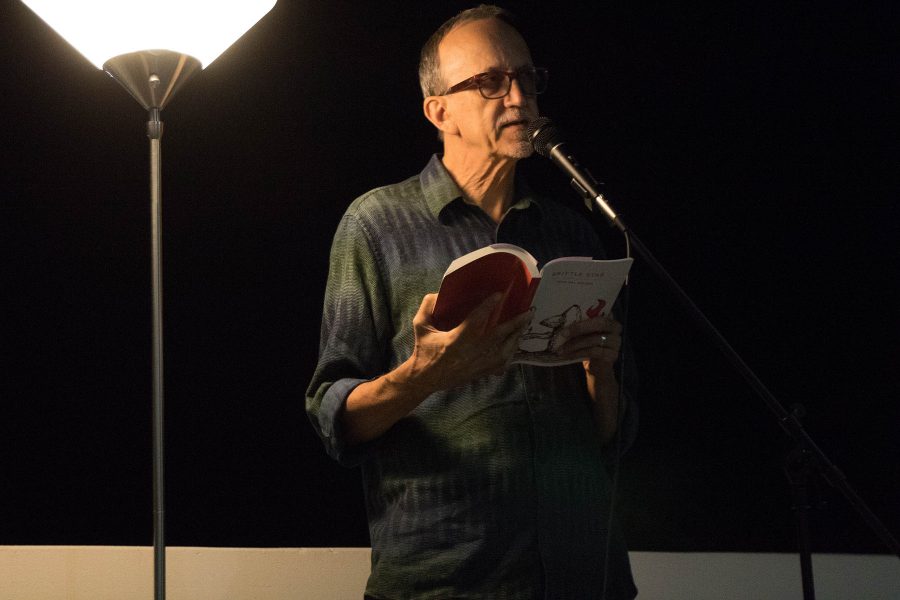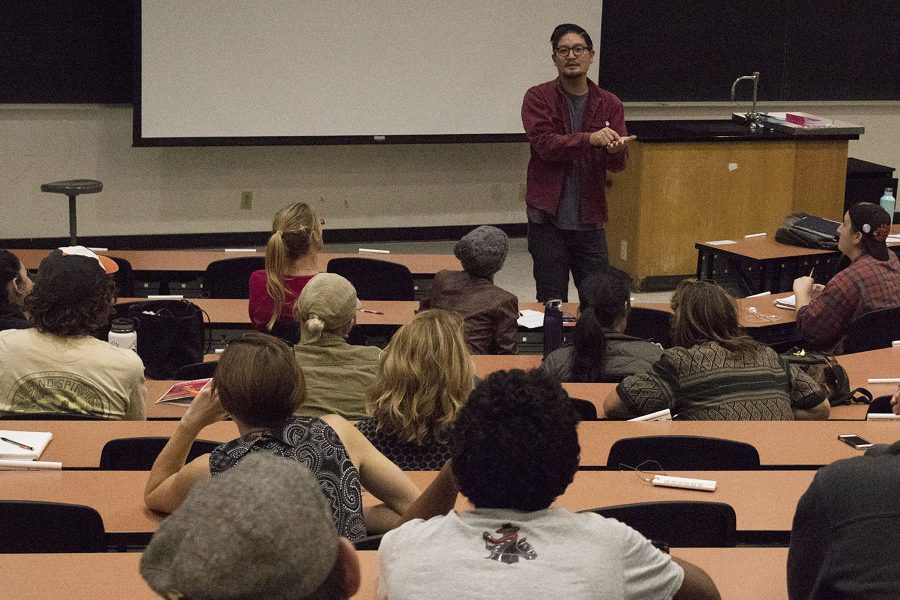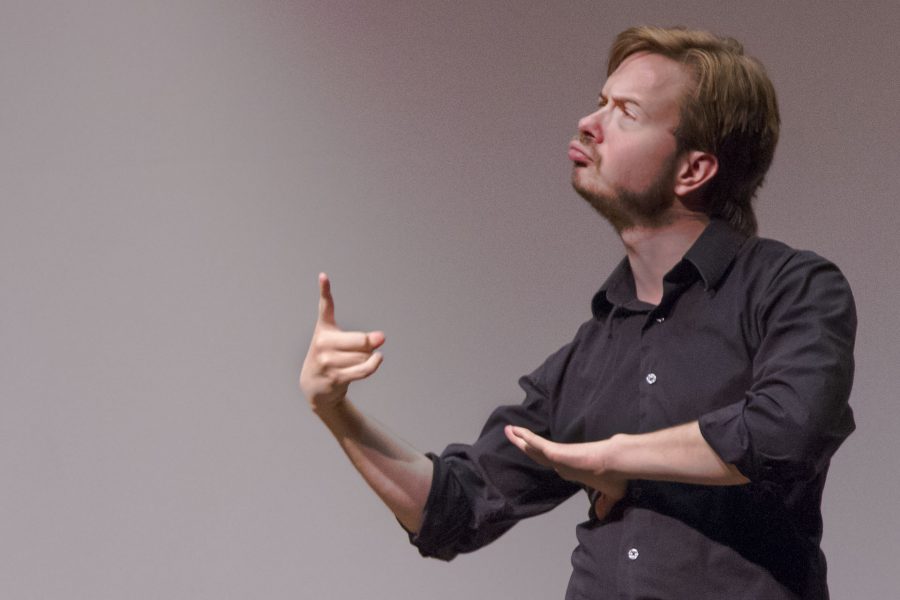It all began with a lapse in concentration. Some sort of subconscious manipulation of bending paper clips to pass the time—only to be thrown away at the end of class.
City College sculpture artist Ben Eckert has since found a passion for bending wire configurations into miniscule twists—reminiscent of an elementary playground set.
Eckert creates hanging sculptures of a different caliber. In his recent works, wire, wood and debris cohesively work together to form pieces such as “20140910” and “20140520.”
His titles either sound like a PLU number or incomplete Social Security numbers. But they do have value.
“The numbers are actually sort of a riddle for the viewer to figure out, they have a meaning but I try hard not to give it away,” he said.
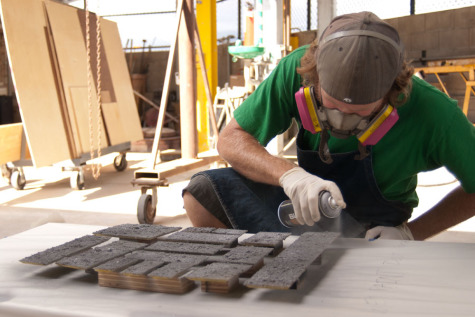
City college art student, Ben Eckert, applies finishing touches to his sculpture on Wednesday, Oct. 15, in Santa Barbara, Calif. Eckert says “I am spray painting the sides and edges so when it is mounted on the wall, people won’t be able to see the color underneath and so that everything blends together evenly.”
The absent-minded habit of bending wires and paperclips has now truly evolved.
“I had left one (a wire configuration) on the table in the sculpture room and the LTA (Lab Teaching Assistant)found it and had it taped to his door and I went to talk to him one day and I noticed it and I was like ‘“I see you found one of my pieces…”’
In the Atkinson Gallery’s most recent exhibit, “Small Images,” Eckert entered his two box pieces, one of which won him the juror’s award, presented by gallerist Tif Sigfrids of Los Angeles.
Minimalistic artists such as Donald Judd and abstract impressionist, Jackson Pollock have helped Eckert identify more of what he likes to incorporate in his art.
In an open box, spray painted in coruscate pink sits a wire configuration of miniscule size, resting upon debris and wood— supported against a whitewashed wall. The simple structure takes of a personality of its own with the use of such bright colors and tiny, thin wires.
Currently, Eckert is focused on new ways of displaying his work, installations that identify different approaches and emotions.
His use for bright colors isn’t just for the mere fact that they are intriguing but also a way to connect with the viewer.
“It makes me happy to see them,” said Eckert.
Ed Inks has been one of Eckert’s teachers throughout his sculpture classes and has been working with the artist to advance his progression to the highest platform.
Inks and Eckert have discussed the evolution of his work and are looking into ways to display his pieces in different manners.
“The boxes imply a space, then what if we start to deal with the actual space and let the room be the box…” Inks said. “He is working on a very large floor piece that will hopefully encapsulate a much larger area and the walls of the room will become the box—the viewer will walk in and have to relate to the pieces as they wander around them from the little narrow pathway around them.”
Inks says that traditional minimalistic artists, like Donald Judd might criticize the textural aspect of the debris but its added effect creates such a more in-depth response to the work.
In a book that Inks shared with Eckert, “Poetics of Space,” by Gaston Bachelard, the idea of using your imagination in forming shapes, space and architecture is vital.
Intimacy and immensity are two components of this book— “You and I can begin to imagine certain things no matter how intimate they are and we can perceive them as having a sense of immensity,” said Inks.
Not only is this a concept that Eckert is constantly consumed with but the future of installation as well and how he can conjure up a piece of art to be different from typical approaches.
Eckert has been featured in several local shows as well as the Atkinson Gallery exhibits and ones at the Annex as well.
His use of color and minimalism don’t disappoint the viewer and leave much to be desired. The sort of feeling one gets from remembering a fond childhood memory is a similar feeling to the one perceived when looking at Eckert’s wire manipulations.
“The very dogma of minimalism,” Inks said.


